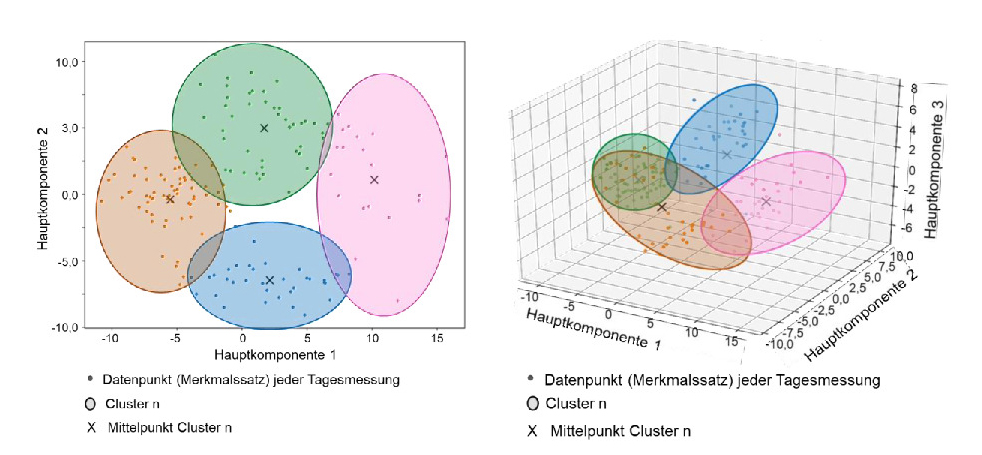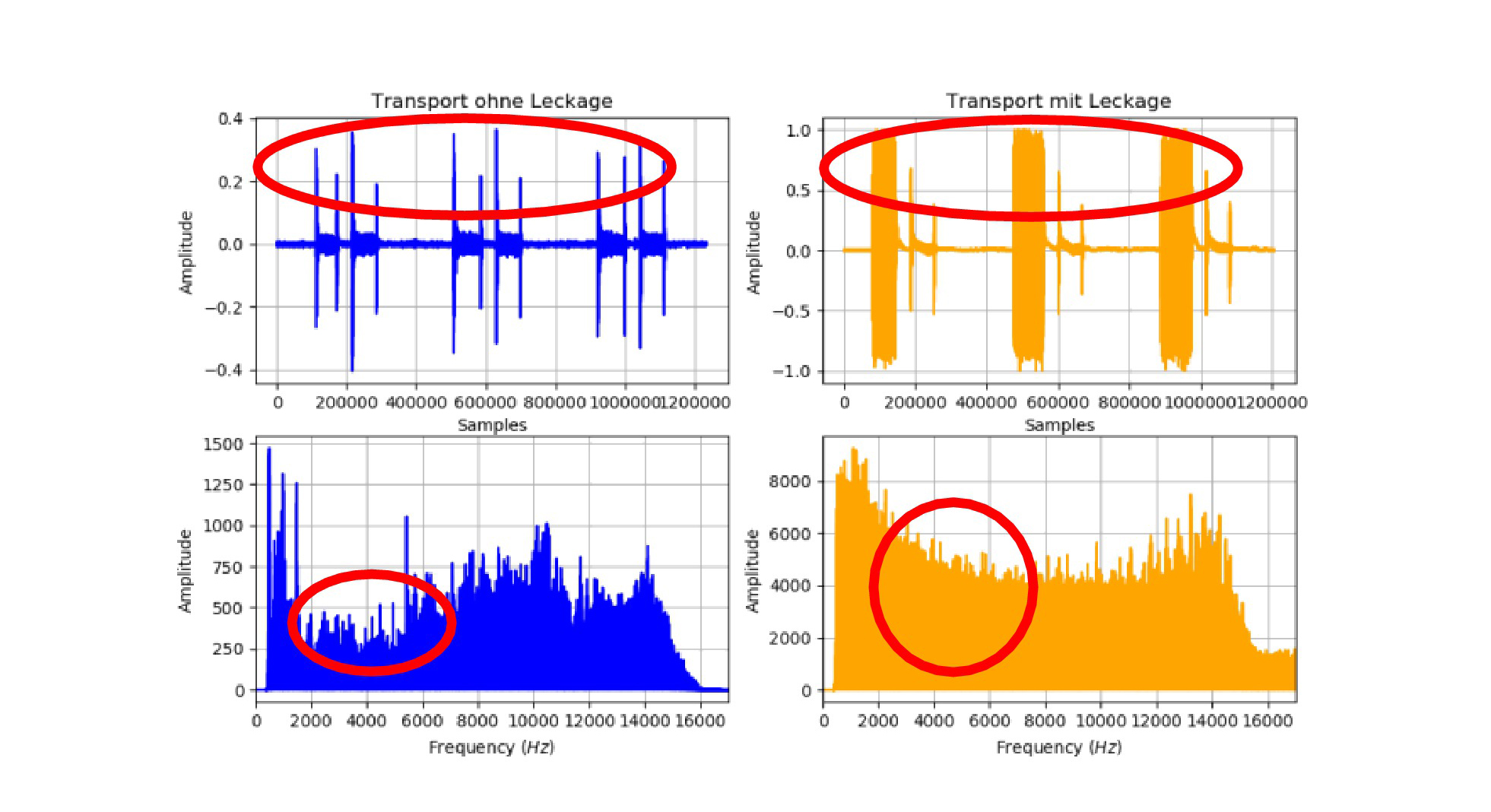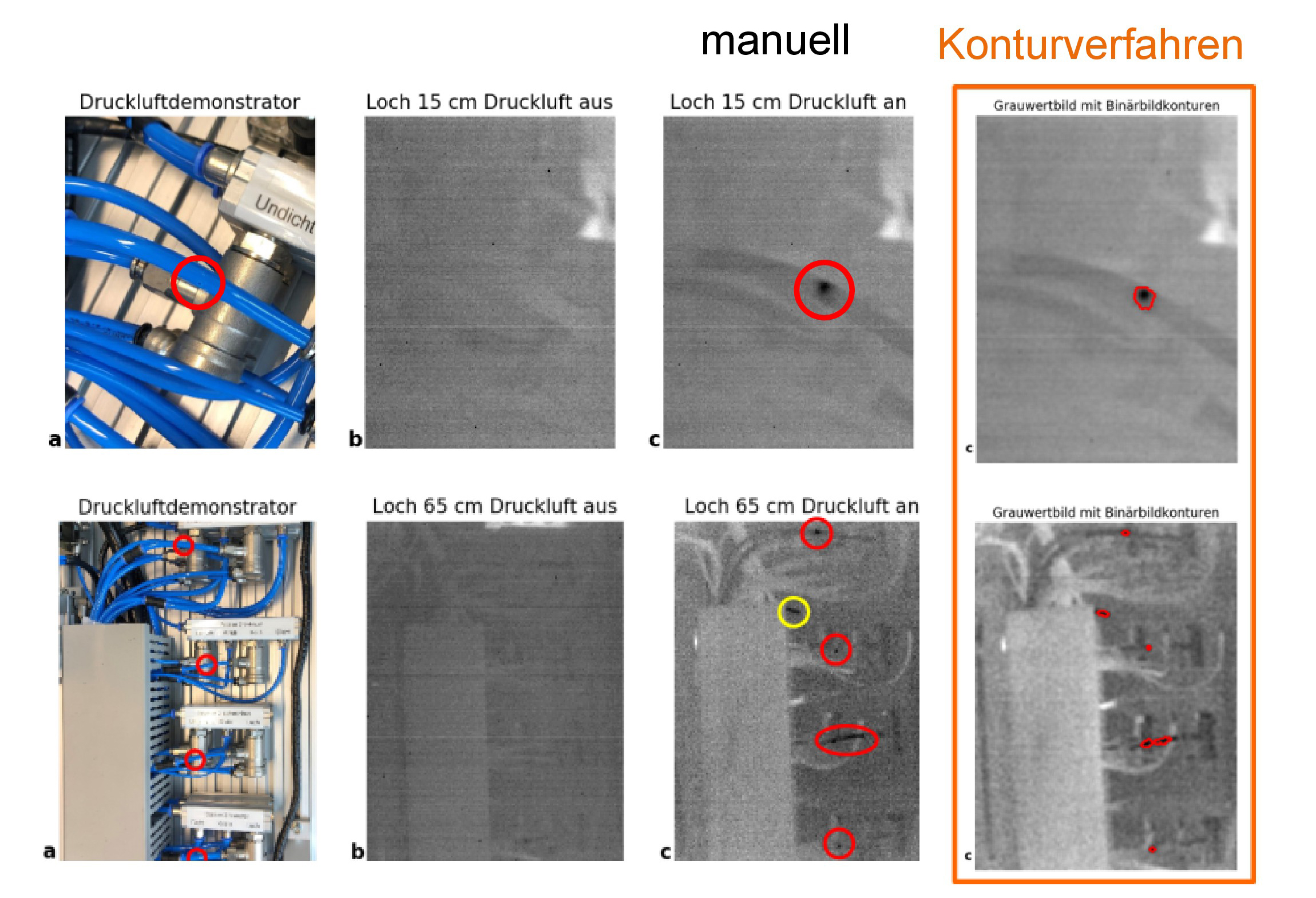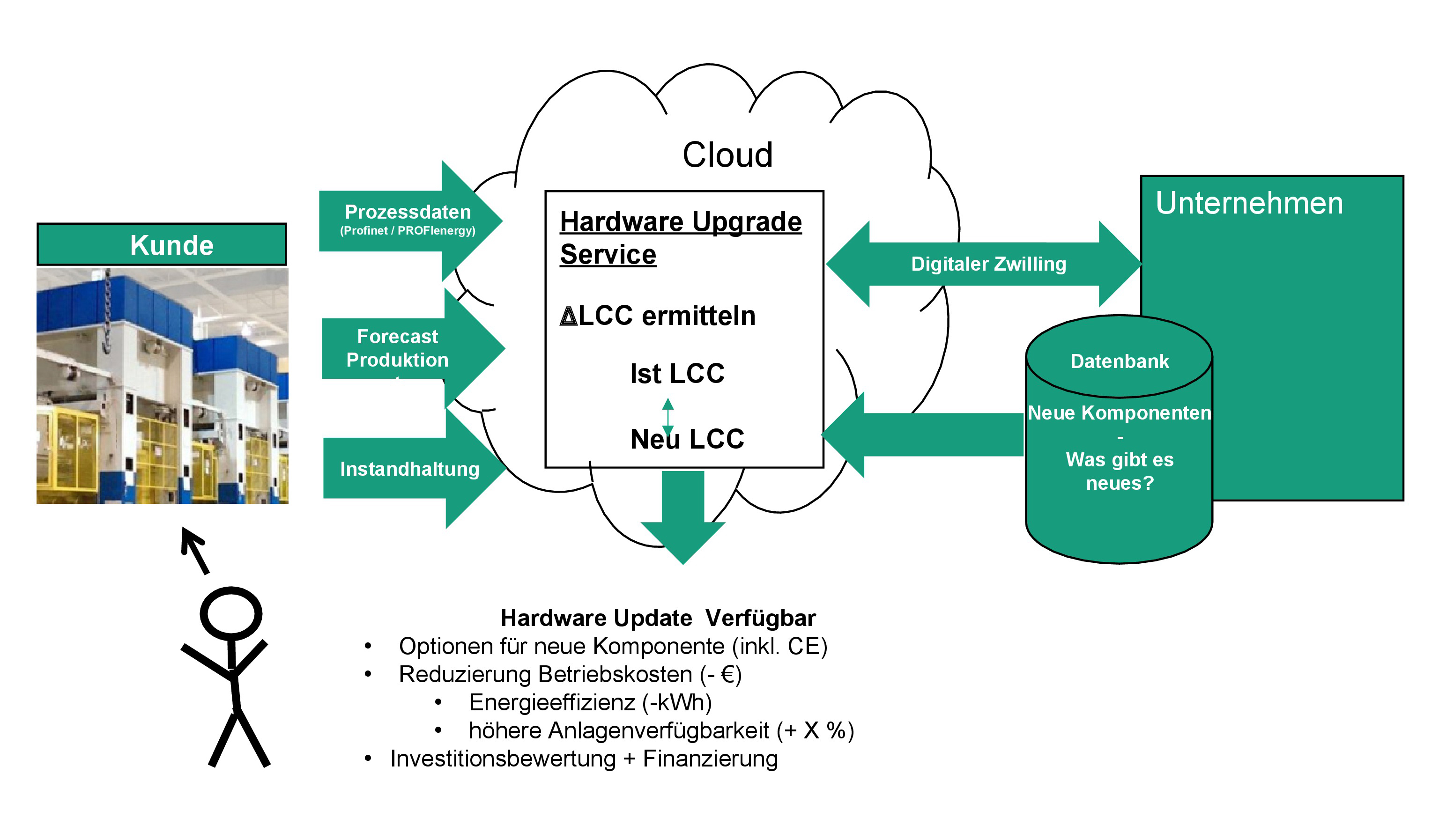Smart Compressed Air Systems Laboratory
Industry meets the laboratory: in our industrial test environments, we evaluate the suitability of products for use in industry. Product prototypes are developed in our laboratory and integrated into an industrial test environment to determine the advantages of their use in industry in reproducible scenarios.
In our demonstration facility, compressed air flows either through intact hoses or through ones with barely visible holes, kinks and leaky connectors - the most common causes of leaks in industrial compressed air systems. Whichever path the compressed air takes, the naked eye is unable to see the difference: the actuators are doing their job. But the demonstrator measures whether the air flowing through the hoses is at a higher or lower pressure, calculates the flow rate, the position of the actuators, the state of the valves and records ultrasonic signals.
Find out more about our current research approaches:
Clustering compressed air colume flows
The volume flows of an external industrial compressed air system can be clustered with unsupervised machine learning. The characteristic patterns identified can be used to detect anomalies. If daily profiles deviate from a predefined tolerance range, they are recognized as anomalies in the signal pattern. Additional interesting analysis possibilities arise if the number of clusters to be grouped is increased.
AI-based leak detection
Identifying actuators and leaks via acoustic measurements
Localizing leaks with thermal imaging
Mobile leak detection with thermal imaging camera during operation with commercially available low-cost hardware. Relationships between system pressure, emitted volume flow and infrared images are analyzed and evaluated. Using the example of a hole in a plastic hose, leaks are visible at 6 bars from a distance of 15 cm and 65 cm.
Hardware Upgrade Service
We have observed that many modernization chances remain unused in industry, which is why one of the research approaches taken by Fraunhofer IPA is to develop a new smart service for compressed air systems.
Advantages for the manufacturer:
- I4.0 leads to new sales concepts
- Follow-up orders are generated through the argument of further cost savings
- Existing business models are expanded
Advantages for the user:
- All upgrades offered cut life cycle costs
- Minimal internal commissioning effort thanks to one-click buying
- Profitability of the upgrade becomes apparent through real data




